HUW TUBERVILL: Australia batted the tourists into submission - thanks to the imperious Bill Lawry - during another drawn series which included innings wins and three stalemates
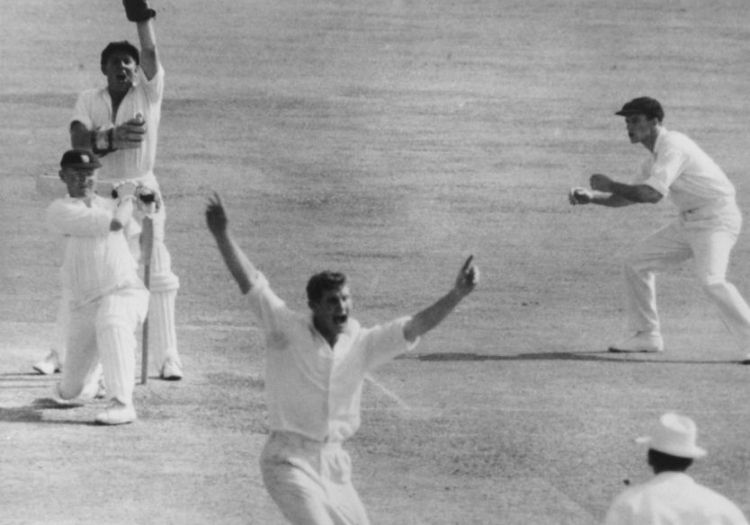
“For the first time the team flew by fast jet aircraft all the way to Australia – and in the cramping discomfort of economy class – and numerous players suffered stomach disorders and odd indispositions, which were grandly called virus diseases."
EM Wellings, the Wisden Cricketers’ Almanack reporter on the 1965/66 Ashes tour, clearly had major reservations about England’s decision to travel all the way to Australia by air.
Ted Dexter’s tourists had taken the aerial route part of the way three years earlier, as far as Ceylon (now Sri Lanka), before completing the journey by boat. MJK Smith’s men flew via Ceylon and Singapore, however, on a British Airways ‘de Havilland Comet’ passenger jet.
The direct approach shortened the time away from home which the majority of players would have welcomed. However, there were a few disadvantages perceived: the switch from English autumn to Australian summer would be sudden rather than gradual, denying the squad a chance to acclimatise properly, and there was less time for team spirit to be forged.
Suspicion of change must have fuelled Wellings’s fears. He went on: “Subsequently, two other touring sides from Britain transported at high speed and great height to Australia, the rugby union and rugby league teams, suffered in the same virulent way on arrival.”
He clearly believed the ‘virus diseases’ hindered England’s Ashes effort significantly.
Jeff Jones and Jim Parks were on their first – and only – Ashes tours, and were amused when I read that somewhat doom-laden account to them 45 years later, in February 2010.
“Air travel shortened the tour, but I remember there was definitely an issue with acclimatisation,” said Jones, the former Glamorgan left-arm seamer who is the father of 2005 Ashes hero Simon. “Whereas before you would slowly get used to the hotter weather over three weeks by boat, I remember some people saying we arrived too quickly and that we were playing too soon.
“David Larter of Northamptonshire did not enjoy the flight as he was 6ft 8ins. He went on two Ashes tours and never played a Test – John Woodcock wrote an article about him, ‘Around the world in 99 overs!’ A few others felt groggy and a bit jetlagged, but I enjoyed the experience as I hadn’t flown that much before.”
The stopover in Ceylon once again produced some forgettable cricket – two drawn one-day matches. “It was monsoon weather,” said Parks, referring to the second match that was rained off after MCC had been bowled out for 127. “We played in Wellington boots – it was just a bit of fun. Then, after Singapore, we landed in Perth on October 21 – my birthday, which I share with Geoff Boycott.”

Local press were quick to label this England squad as the weakest to tour Australia
Those returning to Australia may have noticed that the country’s social climate was shifting away from Britain. Prime Minister Robert Menzies was substantially increasing Australia’s troop deployment in South Vietnam, a policy maintained by Harold Holt, who succeeded him the following year. Holt declared Australia was ‘All the way with LBJ’ when entertained on the White House lawn by President Johnson, a further sign that while the United Kingdom’s focus was more on Europe, Australia continued to be ‘Americanised’. Holt’s short prime ministership – he drowned in 1967 – abandoned the tradition and conservatism of the Menzies era, and embraced the ‘Swinging Sixties’.
England had two chief goals on the tour (curiously a year earlier than the traditional four-year gap – no one can recall why). The first was to entertain, particularly after the disappointing and somewhat negative series of 1958/59 and 1962/63 that had encouraged the Australians to form a negative perception of English cricket. They were partially successful in that until tiredness set in during the final few weeks. But they failed in their second objective. They had looked on course to recapture the urn after a decade, thanks to a superb innings victory at Sydney in the third Test. But they lost the next Test at Adelaide and had to be content with another 1-1 draw, matching the scoreline of three years earlier.
“We had the side to achieve both objectives,” said Parks, the Sussex wicketkeeper/batsman, ‘“but we blew it with some crazy batting at Adelaide.”
England were trying an innovative approach on the trip. Billy Griffith was appointed ‘Tour Overlord’ with a mandate to encourage positive cricket. If the arrangement undermined the captain, Michael John Knight Smith, MJK to all, a bespectacled 32-year-old former rugby international, he did not show it. Wellings wrote: “He is a very good persuader, backed by qualities of charm and tact. In that way, he was able to have his way – the MCC way – with this team.”
Wisden criticised him, though, for England’s slow over-rate. They managed about 116 balls per hour or 14.5 eight-ball overs. Nowadays England struggle to bowl that many six-ball overs in the time.
England saw an awful lot of Bill Lawry that winter. He had already struck 153 and 61 as captain of Victoria in a tour match, and he added 166 in the first innings of the first Test at the Gabba, Brisbane, after surviving a confident caught-behind appeal off David Brown’s seventh ball of the innings. Doug Walters, eight days shy of his 20th birthday, became the fifth Australian to score a century in his first Test innings, as the hosts made good use of the toss to reach 443. Geoffrey Boycott made 45 as England – without an ill Colin Cowdrey – replied with 280. Titmus made 60, Ken Barrington 53 and Parks 52. England were forced to follow on, and Boycott made an unbeaten 63 to ease the tourists to 186 for 3 and the safety of a draw.
“I missed the first Test because I had developed a problem with running on the wicket,” said Jones. “Ken Barrington, Billy Griffith and [assistant manager] Jack Ikin helped me overcome it, but it was still a privilege to be there at the start of Doug Walters’ Test career – he was some player.
“Ken Higgs came in for me and struggled a bit. He was used to wickets in England that seamed, but the ball was not doing much and the Australians were hitting him on the up."
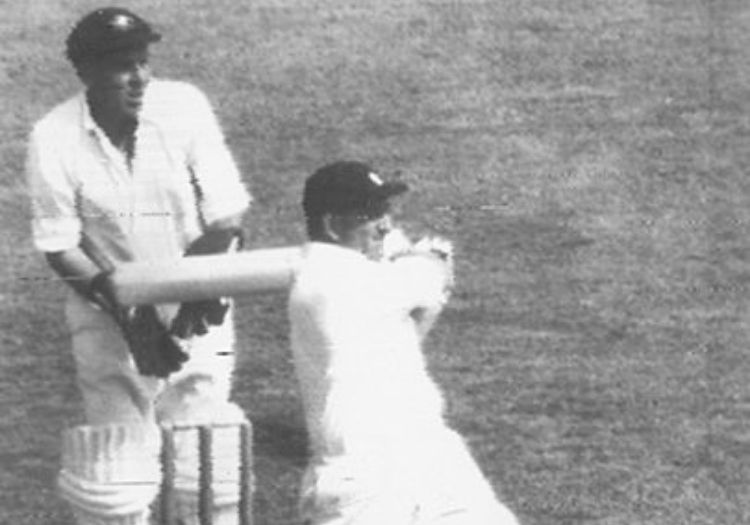
Ken Barrington was once again England's leading batter
Boycott was delighted to play but had an inkling he would lose his place in the next Test to Eric Russell, who had split the webbing of his fractured hand fielding. “I was very ill in Ceylon and was confined to the hospital while Eric scored some runs in the state games,” Boycott wrote. “He broke his thumb, however, so although I’d been out of action for six weeks Mike Smith rushed me into the first Test. I was still not really well and badly out of touch, but I got through on ‘automatic pilot’, completing two decent innings, and thought I was certain to keep my place, particularly as I went on to score some more runs upcountry [94 in a win over South Australia].
“To my horror, however, when the second Test came around they dropped me for Russell, now fit again, and I could not hide my anger and dismay. Billy Griffith broke the bad news, adding that I was in the thirteen because Higgs had been taken ill. If he did not recover, I would play, not just as a batsman but to supplement the bowling.
"I did not say a word. I could not trust myself to speak for a while, but when Griffith tried to smooth things over and imply that it was not the end of the world I exploded. ‘Don’t let Russell near me,’ I shouted, ‘or I’ll push him down the stairs!’ I did not really mean Russell any harm, but the remark merely revealed, in the heat of the moment, how bitterly disappointed I was and how much playing meant to me. Yet it was taken out of that emotional context and repeated to highlight my lack of team spirit. Actually, on the day of the Test, Higgs woke up feeling groggy and I persuaded him to report sick. ‘You’ll never get through in this heat – it’ll kill you!’ I told him. So while he recuperated, I played.”
That second Test, at Melbourne, was played over the New Year. If an example of how things had changed in a decade was needed it came when Jones had Bob Cowper caught at slip for 99. There were none of the ‘gimmes’ that had been seen on previous trips, such as when Keith Miller allowed Tom Graveney to reach his hundred in 1954/55.
“I’m afraid I didn’t have sympathy for Bob for missing his hundred – it was a Test wicket for me!” said Jones. “It was hard work – after eight overs the ball was in shreds because of the coarse grass.”
It was Jones’ second wicket of three in the innings, and he said: “The ball was going through nicely for me, I was enjoying the extra bounce of the Australian pitches.”
England piled on 558 with centuries from John Edrich and Cowdrey and led by 200 runs, but Australia made the game safe, recording 426 second time around.
Things might have been different had Parks not missed a stumping when Peter Burge was 34, at 204 for 4. Burge went on to score 120. It added evidence to Wisden’s contention that Parks should have been played just as a batsman with John Murray behind the stumps.
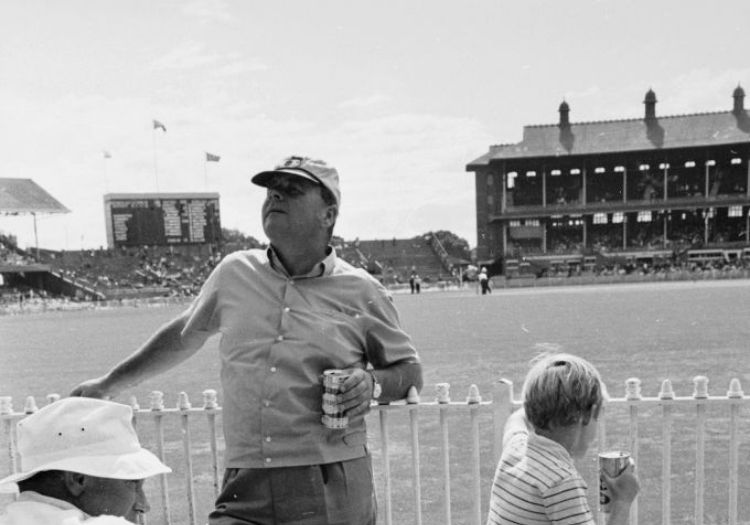
The MCG was used for the second and fifth Tests
Walters also made 115, becoming only the second batsman after Bill Ponsford to score a hundred in each of his first two Tests.
England won the most important toss of the series at the start of the third Test at Sydney and made maximum use of it, scoring 488. Bob Barber struck a dashing 185, his only Test hundred, from 255 balls, with 19 fours. Boycott, who made 84, put on 234 with Barber for the opening wicket, England’s third highest against Australia.
“Bob had been the biggest blocker at Lancashire; he couldn’t hit the ball off the square,” said Jones. “Moving to Warwickshire changed him completely. Suddenly he had every shot in the book. MJK had a close look at him now they were at the same county, saw how he had changed his game, and picked him for this tour.”
Edrich also hit a century, as did Fred Titmus and David Allen later on, and at one stage England 303 for 1, until seamer Neil Hawke pegged them back with 7 for 105 in unhelpful conditions. Australia were forced to follow on after Brown skittled them out for 221 with 5 for 63. Then off-spinners Titmus and Allen claimed four wickets each to dismiss a second time, for 174. It was England’s first victory over Australia in 11 matches.
“Fred and David really bowled beautifully,” said Parks. “I took two stumpings off David in the first innings that showed how well he was bowling. The first, to remove Cowper, turned and lifted and I had an age to remove the bails. The second, to dismiss Walters, was his arm ball.”
England failed to maintain their intensity in the fourth Test at Adelaide, though, with Wisden blaming an ‘unbalanced programme… cluttered with minor games between the third and fourth Tests’. They faced a Country XI at Newcastle, and two teams representing Tasmania at Launceston. “For a fortnight the touring side was opposed by teams not good enough to keep them up to the mark.” And so it proved.
Parks said: “We played shots all the time on that tour. Even Boycott and Barrington batted aggressively. The tactic had worked well at Sydney, but we just blew it at Adelaide. There were some silly dismissals.”
Jones said: “We had done so well at Sydney, but heads dropped a bit after Adelaide, and team spirit was not same.”

Bob Cowper recorded what remains the most recent Ashes triple century
Australia punished England, making 516. Simpson and Lawry put on 244 for the opening partnership, the highest against Australia until 1989, Simpson making 225 and Lawry 119. Jones finished with Test-best figures of 6 for 118, becoming the first Glamorgan player to take five or more wickets in a Test innings for England.
“They had Ian Chappell at No.7 and Keith Stackpole at No.8, that’s how strong their batting line-up was,” said Jones. “Ian remembered me having him caught at gully when we met last summer at the Cardiff Ashes Test. I was proud of that performance, especially in that heat – it was about 108 degrees. I remember the scorer giving me his scorecard as a memento.”
England fared little better second time, making 266 to lose by an innings, although Barrington struck 102, extending a remarkable sequence of first-class scores at Adelaide – 104, 52, 52 not out, 63, 132 not out in 1962-63, and 69, 51, 63, 60 and 102 on this tour. Hawke – Australia’s best bowler in the series – took 5 for 54.
“We had done so well at Sydney but heads dropped a bit after Adelaide and the team spirit was not the same,” said Jones.
“Things were going wrong for MJK. He had hoped to be able to rely on Fred to keep an end tight, but he was having a disappointing tour.”
Titmus took only nine wickets in the series at 57 apiece, compared to 21 at 29 three years before, and bowled flatter and flatter as the series unfolded. By contrast, he averaged 64 with the bat. Allen did slightly better, taking nine wickets at 44.
Smith’s own form was a worry. He made only 107 runs at an average of 17 in the series, although he took some outstanding catches at short-leg. Smith, John Thicknesse wrote, observed: “that all bowlers, except off-spinners, had most of their fielders on the offside, so he considered it only sensible to aim to score most of his runs to leg, which he dubbed ‘The man’s side’.”
This approach led to problems in Australia. “The wickets were very quick and Mike liked to whip it through midwicket,” said Parks, “so he was a bit late on some shots.” Jones said: “MJK was struggling for form. It was a hard job to captain and bat up the order in Australia.”
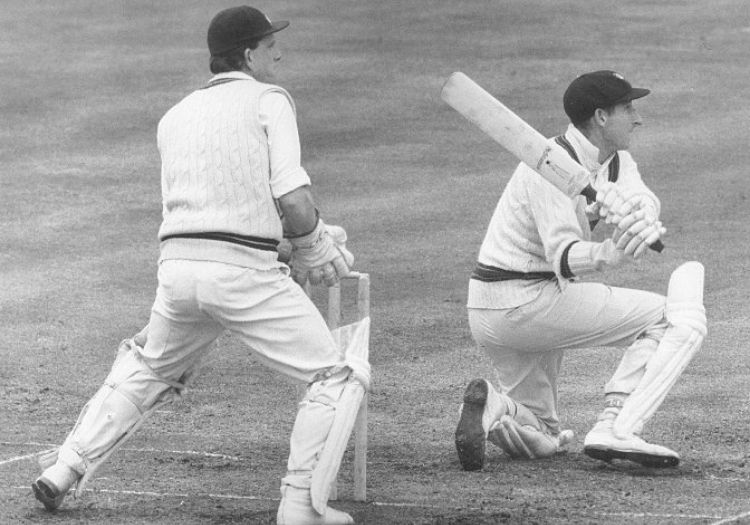
Bill Lawry was in unstoppable form throughout the series
There was also an echo of the problem that beset the 1958-59 tour when the arrival of Peter May’s fiancée had resulted in dissent.
“Mike Smith’s wife and children [twin boys] came out to Australia at Christmas and this caused a bit of resentment,” Jones said. “A lot of us couldn’t afford to do the same or were simply not allowed. Ken Higgs took it badly as he had two young boys. I hadn’t started a family yet, but it certainly didn’t go down well with some. We were too professional to let it affect us at the time, but it was a bit upsetting.”
Parks said: “I recall there was some issue about MJK’s wife coming out – Colin Cowdrey’s wife arrived as well – but it was the first time I’d been to Australia and I was just having a tremendous time. Everything was going right for me. The wickets were marvellous for me: they really suited my batting.”
Wellings wrote: “Smith had to think about [his family] as well as his team and escort them around the country. Skippering on tour is a job on its own big enough for anyone. The addition of the cares of a family in a strange country, which Smith himself had not previously visited, is a crippling additional burden. Wide experience of touring during the past 20 years has firmly persuaded me that wives accompanying cricketers are a liability. The husbands cannot leave them to fend for themselves.”
The series was running along similar lines to 1962/63. England had taken a lead, only to throw it away in the next match. Three years earlier they went into the final Test, at Sydney, needing a victory to take back the Ashes. This time the decider was at Melbourne. And this time the result was a similar stalemate.
The mission at the MCG started well. England won the toss and rattled up 485. Conscious they needed enough time to bowl out Australia twice, they maintained a positive approach. Barrington smashed 115, bringing his 100 up with a six (becoming the first person to do so twice in Ashes Tests).
Edrich made 85, and Cowdrey 79, and Parks also came within touching distance of a hundred, until he was run out for 89. “I’d been run out by Kenny at Adelaide, and Fred did for me at Melbourne,” said Parks. “The dumb one and the deaf one! Kenny was always the silent partner, he never called, and Fred didn’t hear me.
“Kenny had a great tour, but he was highly strung. He’s the best player I have played with overseas, though. He loved the true bounce of overseas pitches; he never felt as uncomfortable in England because of the uneven bounce. He was such a good hooker, so if they bowled anything short, he just said, ‘Thank you very much’.
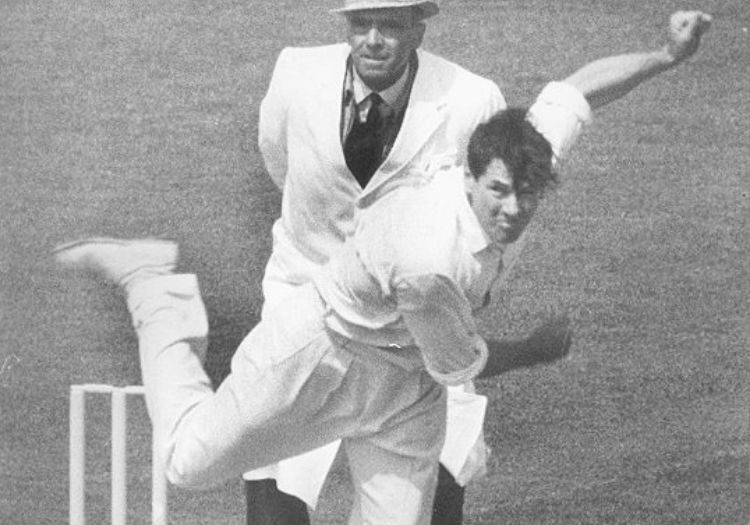
In a batter-dominated series, Neil Hawke was the pick of the bowlers
If England felt the Ashes were attainable, however, they had not accounted for an extraordinary innings from the recalled Cowper. Although Lawry made 108, it was the Victorian left-hander’s 307 that made the Ashes safe. He batted for 727 minutes, hitting just 20 fours, in the longest innings against England overseas, and the fourth-longest innings in all first-class cricket.
“We batted well and were in very good spirits,” said Jones, “but Cowper played wonderfully and took the game away from us. He was a little vulnerable early on, but extremely difficult to remove when set. I was tired by then. It was a big ground and I was struggling with cramp.”
England had no choice but to bat out time, finishing on 69 for 3.
In the inevitable post-mortems, Wisden said Smith was a ‘spent force’ by the end of the series, while Boycott believed Smith’s captaincy was affected because he was “under the control” of Griffith. “You could not meet two nicer men and they got on well together with no personality clashes, but the manager could not run the cricket from the dressing room. It was an experiment that failed and was never tried again,” Boycott said – although Raymond Illingworth arguably had at least an equal say in strategy when he accompanied his captain, Mike Atherton, for three weeks of the Ashes tour of 1994/95 and the tour to South Africa the following winter.
Parks was keen to defend his captain, though: “Everyone liked MJK. He was a players’ captain. I went to India, South Africa and Australia with him, and he was the shrewdest England captain I played under. It was a super trip. Our batters had great tours (Barrington averaged 66, Titmus 64, Cowdrey 53, Parks 48, Edrich 46 and Boycott 42) but we just couldn’t bowl the Australians out enough times on those flat decks.”
Jones, took 15 wickets at 35 apiece, and Brown (11 at 37), and had respectable series, but England were missing the class of Fred Trueman and Brian Statham. The off-spinners struggled, and Barber’s leg-spin, feared – by the hosts – was under-used.
Australia’s batsmen reigned. Simpson averaged 88, Lawry 84 (with centuries in the first, fourth and fifth Tests and only one failure), Cowper 82 and Walters 68.
With the England party tired and jaded, the last thing they needed was to go to New Zealand. That Test series – consisting of three draws, – did little to raise spirits. Flying back via Hong Kong, – where two more meaningless one-day matches were played, England were feeling more than a little sorry for themselves.
RELATED STORIES
Ashes Chronicles - Part 1: The hastily arranged tour of 1946/47
Ashes Chronicles – Part 2: Bedser carries struggling England as Close has a nightmare in 1950/51
Ashes Chronicles – Part 3: Typhoon Tyson blows Australia away in 1954/55
Ashes Chronicles – Part 4: England find series a drag in 1958/59
Ashes Chronicles – Part 5: Illy blasts ‘The Sussex Tour’ – 1962/63